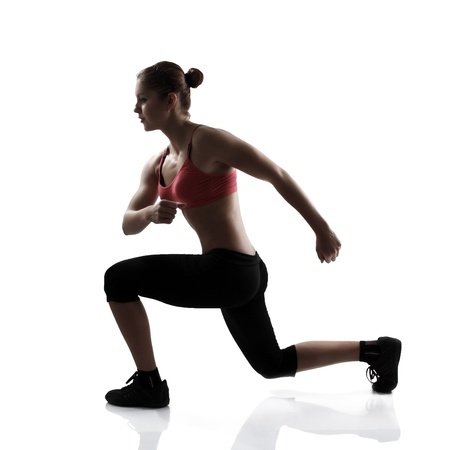Plyometrics

Tid Bits of Info
- Begin all plyometric and regular exercise routines slowly to avoid an injury.
- Develop a good sound foundation of fitness prior to beginning the plyometric workouts.
- Expect muscle soreness (DOMS: Delayed Onset Muscle Soreness) after the routine is completed due to the excessive amount of eccentric contractions.
- All powerful motions that we perform are preceded by an eccentric loading of the muscles involved.
- Seek the advice of a Physical Therapist if you are injured or need help to develop a routine.
Many athletes looking to develop intensive speed and power utilize a series of exercises known as plyometrics. People of all ages and sizes have begun performing these exercises to help develop greater strength throughout their musculoskeletal system. Plyometrics offer benefits and risk potential injuries due to the intense nature. A qualified healthcare professional can help people develop a routine with proper form that is extremely beneficial in the development of strength and power.
Plyometrics Increase Power
Power equals speed times strength. Simply stated, power is strong movements at a high rate of speed. Athletic competition and some everyday activities require someone to be able to generate a great deal of power to accomplish a task. Athletic trainers, coaches, personal trainers and many others in the fitness industry have preached the importance of power development. Plyometrics workouts focus upon developing strength and power.
Muscles can contract three different ways: isometric contractions, concentric contractions, and eccentric contractions.
1. Isometric contractions occur and the there is no movement within the muscle.
2. Concentric contractions occur and the muscle shortens in length.
3. Eccentric contractions occur and the muscle lengthens. The eccentric contractions can produce the largest contractile force within the muscle and is thought to be the best way to develop strength in the shortest period of time.
Most fitness and healthcare professionals commonly follow the practice of “over-loading” a muscle with a great deal of resistance to develop strength. Eccentric loading is thought to cause more muscle cell damage that heals as a bigger and stronger muscle cell. All three types of contractions can help to develop strength; therefore the more resistance that is applied to the muscle, the faster it will gain strength.
Plyometrics incorporate three phases during the process.
1. Eccentric – In the loading phase the muscle elongates and stretches under a great deal of tension. The elastic property of the muscle stores some of the energy (similar to stretching a rubberband).
2. Amortization – During the transition phase eccentric loading stops and the muscle begins to transition and switch to a concentric contraction. It is thought that this transition can be “trained” to a certain point and through a diligent, well designed program can help to increase the amount of force that the muscle can generate when it switches to the concentric phase.
3. Concentric – Finally, the take off phase is the last phase where explosive force is released.
Plyometrics can train a muscle group for activities that place excessive amounts of force through a particular body part. A well-designed plyometric routine is critical in prevention of injuries. It will also help to improve the nervous system’s communication with certain muscles and joint receptors. This is one way to decrease the prevalence of injuries that occur due to the excessive force applied during different activities.
Most injuries occur when we are attempting to decelerate a given body part. Training for deceleration can reduce injuries. The body is often not capable of generating enough deceleration force, and the body ends up with an injury. For example, most ACL (Anterior Cruciate Ligament) injuries occur this way. The body can be trained to perform certain movements that will help to prevent ACL injuries, and there are numerous ACL injury prevention programs that utilize different plyometric exercises to accomplish the task.
Plyometric exercises can be performed for the upper and lower body strengthening programs. All of these programs should begin at a low level of intensity and slowly increase over time. These exercises require a good solid foundation of fitness therefore if someone is not physically fit they should not begin a routine that relies on plyometric exercises to be the corner stone of the routine.
Plyometric exercises have become an integral part of most fitness and athletic workouts. Any sport or activity that requires someone to be able to generate a lot of force and explosive power will need to incorporate these exercises to ensure that they are prepared for the task at hand and are able to avoid an injury.

























